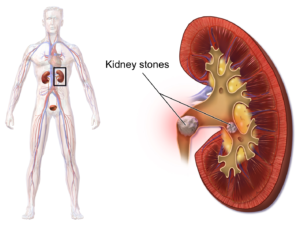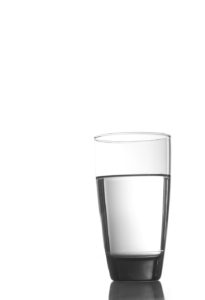- What are kidney stones?
Are small (at the beginning), hard mineral deposits that form in the kidney. Urine contains dissolved salts and minerals. If the urine has high levels of this deposits, you can form kidney stones. Stones can stay in the kidney, but eventually can travel down to the ureter, bladder and urethra. If the stone blocks the ureter, it also blocks the urinary flow and can cause excruciating pain.
- How common are kidney stones?
The lifetime prevalence of having kidney stones is estimated at 1% to 15%. It varies according to race, age, gender and geographic location. Specifically, 114.3 per 100,000 people will have an episode of kidney stones. It is estimated that more than 500,000 people visit emergency departments for kidney stone disease.
- What are kidney stones made of?
Calcium stones (calcium oxalate by far is the most common) in 80% of cases. Uric acid stones 5-10%. Struvite 10% mostly related to urinary tract infections. Cystine less than 1% of cases.
- What are the risk factors for kidney stones?
Men are affected 2-3 times more than women. It is more common in whites, followed by hispanics, asians, and african-americans. It is uncommon before age 20 but peaks in the fourth to sixth decades of life. It has a higher prevalence in hot, arid, or dry climates (mountains, desert, or tropical areas). However, genetic factors and diet may influence this disease. Heat exposure and dehydration are occupational risk factors for kidney stone disease. Also overweight and high body mass index are directed related to kidney stone disease. Despite this risk factors, the most important risk factor is dehydration, so a high fluid intake can prevent urolithiasis.
Don’t miss PART II of this FAQ.


Over four weeks ago a friend of mine got his kidney stones removed via therapy. No surgery involved. I was surprised as he brought pictures of new stones he passed daily for a week. Now he’s free.